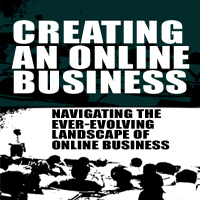


Building Connections In The Digital Age

In the fast-paced digital landscape of the 21st century, content marketing has emerged as a dynamic and influential strategy for businesses to connect with their target audience. It's not just about creating content; it's about delivering valuable and relevant information that engages, educates, and inspires consumers. In this article, we'll explore the significance of content marketing and its role in building connections in the digital age.
Defining Content Marketing
Content marketing is an approach that involves the creation and distribution of informative, entertaining, and engaging content with the aim of attracting, engaging, and retaining a specific audience. Unlike traditional advertising, content marketing focuses on delivering value to the audience rather than directly promoting a product or service.
The Importance Of Content Marketing
Building Trust: Content marketing fosters trust with your audience. By consistently providing valuable information, you establish yourself as an authority in your industry and build credibility.
Educating The Audience: It allows you to educate your audience about your products, services, and industry. Informed customers are more likely to make confident purchase decisions.
Engaging And Entertaining: Good content captivates and entertains, keeping the audience engaged. This engagement often leads to longer-lasting relationships with customers.
Search Engine Optimization (SEO): High-quality content is favored by search engines, leading to better search rankings. This can increase the visibility of your business online.
Sharable Content: Well-crafted content is more likely to be shared on social media and other platforms. This helps to increase your reach and brand exposure.
Key Components Of Content Marketing
Content Strategy: Begin by developing a content strategy that outlines your goals, target audience, content types, and publishing schedule. Your strategy will guide your content creation efforts.
Quality Content: Content should be informative, well-researched, and free from errors. It should provide value to your audience and address their needs or interests.
Variety Of Content Types: Diversify your content to cater to different preferences. This may include blog posts, articles, videos, infographics, podcasts, and more.
Consistency: Regularly publish new content to keep your audience engaged and informed. Consistency is key to building a loyal following.
Promotion: Share your content across various platforms, including your website, social media, and email newsletters. Promote it to reach a wider audience.
Real-Life Examples Of Content Marketing Success
Red Bull: Red Bull is a prime example of content marketing success. They have created a media empire around extreme sports, producing videos, articles, and events that align with their brand's image of high-energy adventure.
HubSpot: HubSpot provides a wealth of educational content in the form of blog posts, e-books, webinars, and tools. Their content helps businesses understand and implement inbound marketing strategies, while also showcasing their software solutions.
The New York Times: Even traditional news outlets have embraced content marketing. The New York Times offers various newsletters and podcasts that cater to different reader interests, broadening its audience base.
Content marketing is not just a trend; it's an essential aspect of modern business. It allows brands to build connections, educate their audience, and establish themselves as trusted authorities in their respective industries. By focusing on quality content that resonates with your audience, you can not only attract and engage customers but also inspire loyalty and advocacy in the digital age.


The Art Of Collaborative Success
 Cost-Effective Marketing: For businesses, affiliate marketing is a cost-effective way to reach a broader audience. Rather than bearing the upfront costs of advertising, they only pay commissions when sales are made, making it a highly efficient marketing strategy.
Cost-Effective Marketing: For businesses, affiliate marketing is a cost-effective way to reach a broader audience. Rather than bearing the upfront costs of advertising, they only pay commissions when sales are made, making it a highly efficient marketing strategy.
Targeted Marketing: Affiliates often have well-defined target audiences. This enables businesses to tap into niche markets and reach potential customers who are genuinely interested in their products or services.
Transparency And Trust: Transparency and trust are vital in affiliate marketing. Affiliates must disclose their relationship with the business they are promoting, and businesses must be transparent about commission structures and payments. Maintaining trust with the audience is crucial.
Best Practices In Affiliate Marketing
Choose The Right Partners: Select affiliates who align with your brand and target audience. The better the alignment, the more successful the partnership is likely to be.
Clear Agreements: Establish clear and comprehensive affiliate agreements that outline commission structures, payment terms, and guidelines for promoting your products or services.
Provide Quality Marketing Materials: Offer affiliates high-quality marketing materials, such as banners, links, and product information. These tools will help affiliates effectively promote your offerings.
Regular Communication: Stay in touch with your affiliates. Regular communication helps build a strong working relationship and ensures everyone is on the same page.
 Stay Competitive: Competition is fierce in almost every industry. Transforming your approach allows you to differentiate your business and gain a competitive edge.
Stay Competitive: Competition is fierce in almost every industry. Transforming your approach allows you to differentiate your business and gain a competitive edge.
Innovate And Improve: Transformation often involves innovation. Embracing new technologies, processes, and ideas can lead to improvements in efficiency, quality, and customer satisfaction.
Risk Mitigation: By diversifying your approach and adapting to new challenges, you can mitigate risks and increase your business's resilience in the face of unforeseen obstacles.
How To Transform Your Business Approach
Embrace Technology: Technology is at the heart of modern business transformation. Explore how emerging technologies, like artificial intelligence, automation, and data analytics, can enhance your operations, streamline processes, and offer new opportunities.
Customer-Centric Focus: Shift your approach to be more customer-centric. Listen to your customers, gather their feedback, and use it to tailor your products or services to their needs and preferences.
Data-Driven Decision-Making: Data is a goldmine of insights. Implement data-driven decision-making processes, utilizing analytics to make informed choices that drive business growth.
Agile Leadership: Cultivate a leadership culture that is agile and adaptable. Leaders who encourage creativity and innovation among their teams are more likely to succeed in transforming their businesses.
Diversify Revenue Streams: Relying on a single revenue stream can be risky. Explore opportunities to diversify your income sources, whether through additional products, services, or strategic partnerships.
Navigating The Mobile-First Landscape
 3. SMS Marketing
3. SMS Marketing
Short Message Service (SMS) marketing is a direct and immediate way to connect with customers. Sending promotional offers, updates, and critical information via text messages can be highly effective. It's important to obtain explicit consent and provide easy opt-out options to respect users' privacy.
4. Social Media Marketing
Leverage social media platforms to connect with mobile users. Facebook, Instagram, Twitter, and LinkedIn are popular platforms with a substantial mobile user base. Create engaging content, run targeted ads, and utilize mobile-specific features like Instagram Stories to engage with your audience.
5. Location-Based Marketing
Location-based marketing uses the GPS and location data of mobile devices to deliver relevant and timely messages to users based on their geographic location. Techniques like geofencing can be employed to send notifications or offers to users when they enter specific areas, such as near your physical store.
6. Mobile SEO
Optimize your website and content for mobile search engines. Mobile SEO ensures that your site ranks well in mobile search results. Factors like page load speed, mobile-friendly design, and local SEO optimization play a significant role in mobile search rankings.
7. Video Marketing
Video content is highly engaging on mobile devices. Create compelling video content that is optimized for mobile consumption. Platforms like YouTube, TikTok, and Instagram are ideal for sharing video content and reaching a broad audience.






A Winning Combination
 3. Scalability: You can start small and gradually scale your affiliate marketing efforts. As you gain experience and build a following, you can expand your strategies and reach, increasing your potential for passive income.
3. Scalability: You can start small and gradually scale your affiliate marketing efforts. As you gain experience and build a following, you can expand your strategies and reach, increasing your potential for passive income.
4. Global Reach: The internet knows no geographical boundaries. Affiliate marketers can tap into a global audience, multiplying their income potential and increasing the chances of earning commissions around the clock.
5. Evergreen Potential: Many affiliate products and services belong to evergreen niches. These are areas of interest that remain relevant over time, ensuring that your marketing efforts can continue to generate income long after you create the content or promote a product.
Setting Passive Income Goals: To leverage affiliate marketing effectively for passive income, it's essential to set clear and achievable goals:
1. Define Your Objectives: Determine what you want to achieve with passive income. Is it to cover your monthly bills, save for retirement, or attain financial freedom? Setting specific goals helps you stay focused.
2. Calculate Your Income Target: Quantify your passive income target. Understand how much you need to earn to reach your financial goals. This provides a tangible benchmark to work toward.
3. Develop A Strategy: Create a detailed plan for your affiliate marketing efforts. Identify the products or services you'll promote, the platforms you'll use, and the content you'll create. Your strategy should align with your income goals.
4. Monitor And Adjust: Regularly monitor your progress toward your passive income goals. Use analytics and tracking tools to assess the effectiveness of your affiliate marketing campaigns. Adjust your strategies as needed to optimize your results.
Turning Passion Into Profits
 3. Build A Dedicated Audience: Growing your blog's audience is a critical step in turning it into an income source. Utilize SEO, social media, and email marketing to attract and engage readers. A larger, more engaged audience opens the door to various income-generating opportunities.
3. Build A Dedicated Audience: Growing your blog's audience is a critical step in turning it into an income source. Utilize SEO, social media, and email marketing to attract and engage readers. A larger, more engaged audience opens the door to various income-generating opportunities.
4. Affiliate Marketing: One of the most popular income streams for bloggers is affiliate marketing. This involves promoting products or services relevant to your niche and earning a commission for each sale made through your referral. Transparency is vital when using affiliate links to maintain trust with your readers.
5. Display Advertising: Display ads, such as Google AdSense, offer bloggers another income stream. Advertisers pay you based on ad clicks and impressions. However, ad placement should be strategic and not disrupt the reader's experience.
6. Sponsored Content: Collaborating with brands for sponsored content is a reliable income source. When working with sponsors, ensure their products align with your blog's niche, and always disclose any paid partnerships to your audience.
7. Sell Digital Products: If you have specialized knowledge in your niche, consider creating and selling digital products such as e-books, online courses, or downloadable templates. This approach provides a steady stream of passive income.
8. Membership And Subscription Models: Platforms like Patreon and Substack allow bloggers to offer premium content or perks to subscribers who pay for exclusive access. This model can create a loyal and steady source of income.
9. Consulting And Coaching: Leverage your expertise by offering consultation or coaching services within your niche. Many readers are willing to pay for personalized guidance and insights.